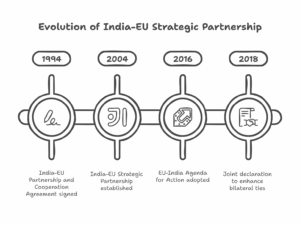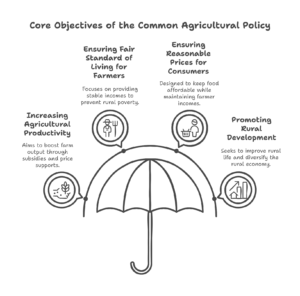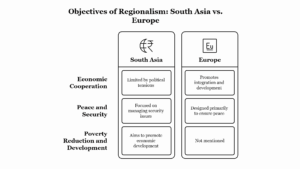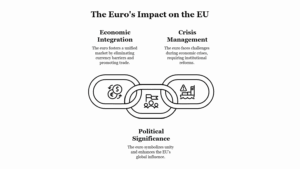Multiculturalism is one of the defining characteristics of Canadian society, a central element of its national identity and public policy. In Canada, multiculturalism refers not only to the visible presence of diverse ethnic, cultural, and religious groups but also to the country’s political commitment to embracing and fostering this diversity. Unlike other nations that have historically defined themselves along ethnic, religious, or cultural lines, Canada has adopted multiculturalism as a national policy, officially recognizing the value of cultural diversity in shaping the country’s future. This approach, enshrined in the Canadian Multiculturalism Act of 1988, emphasizes the importance of inclusivity, equality, and shared citizenship.
The nature of multiculturalism in Canada can be analyzed from various perspectives, including its policy framework, its cultural dimensions, its political and social implications, and its challenges.
1. Historical Development of Multiculturalism in Canada:
Canada’s history has been shaped by waves of immigration, with successive governments seeking ways to integrate newcomers into Canadian society. Early settlement policies focused on assimilating immigrants, but by the 1960s, Canada began to shift towards a more inclusive model. The 1967 immigration policy reforms, which moved away from race-based criteria, marked a significant turning point in the country’s approach to immigration, emphasizing non-discrimination and cultural diversity.
In the 1970s, the concept of multiculturalism was further formalized under the leadership of Pierre Trudeau, who recognized that Canada’s diversity was not only a social reality but also a national strength. Trudeau’s vision of multiculturalism sought to preserve and promote cultural diversity, while ensuring that all Canadians could integrate into the national fabric, irrespective of their ethnic or cultural backgrounds. The Canadian Multiculturalism Act of 1988 institutionalized this vision by asserting that multiculturalism is a fundamental characteristic of Canadian society and that immigrants and minority groups should be able to preserve their cultural heritage while participating fully in Canadian life.
2. Multiculturalism as a National Policy:
Multiculturalism is one of the pillars of Canadian national policy, defined by the Canadian Multiculturalism Act as a recognition of the rights of individuals to retain their cultural identities while participating equally in Canadian society. The policy recognizes that Canada’s diversity is a source of national strength, and it promotes the idea of unity through diversity.
- Government Support for Multiculturalism: Canada has enacted policies to support cultural preservation, including funding for language and cultural programs, support for ethnic media, and recognition of cultural holidays. This is also reflected in official language policies (French and English), the inclusion of diverse cultural traditions in public life, and measures to address discrimination.
- Political and Legal Framework: The Charter of Rights and Freedoms (1982), which is part of the Canadian Constitution, also supports multiculturalism by guaranteeing the equality of all citizens and the right to cultural expression. The Immigration and Refugee Protection Act (2002) similarly emphasizes the importance of multiculturalism by promoting family reunification and humanitarian principles in Canada’s immigration policy.
3. Cultural Dimensions of Multiculturalism:
Canada’s multicultural society is visible in the ethnic and cultural diversity of its population. Immigrants to Canada come from a wide range of cultural, linguistic, and religious backgrounds, including those from Europe, Asia, Africa, and the Middle East. Over the years, various communities, such as Chinese, Indian, Filipino, and Arab Canadians, have contributed significantly to the cultural richness of the country.
- Urban Diversity: Canada’s largest cities, such as Toronto, Vancouver, and Montreal, have become melting pots of different cultures, languages, and traditions. In these urban centers, cultural festivals, ethnic restaurants, art exhibitions, and cultural performances serve as tangible expressions of the multicultural ethos.
- Cultural Integration and Preservation: Canada encourages the preservation of cultural heritage while fostering integration into the larger society. This is seen in the support for ethnic schools, language programs, and cultural exchanges. At the same time, immigrants are encouraged to adopt Canadian values such as democracy, equality, and respect for the rule of law.
4. Social Implications of Multiculturalism:
Multiculturalism in Canada has led to the development of a unique Canadian identity—Canadian citizenship that is not defined by ethnicity or cultural heritage but by a commitment to shared values. This has fostered a sense of belonging among immigrants and minority groups.
- Promotion of Social Cohesion: By emphasizing inclusivity and the equality of all citizens, multiculturalism seeks to reduce ethnic tensions and promote social cohesion. The Canadian identity is viewed not as a homogenous Anglo-Canadian identity but as an evolving, inclusive concept that welcomes diversity.
- Intergroup Relations: Multiculturalism has also contributed to more harmonious intergroup relations in Canada. Although some challenges remain, such as issues of racism, discrimination, and segregation, Canada has generally been seen as a model of multiculturalism, where diverse communities coexist and contribute to the national mosaic.
5. Economic Implications:
Multiculturalism in Canada also has significant economic implications. Immigrants contribute to the Canadian economy by bringing a wealth of skills, knowledge, and cultural capital. Immigrants often fill critical labor shortages, particularly in sectors such as healthcare, technology, and construction. Additionally, multiculturalism encourages international trade and global ties, as immigrants often maintain strong connections to their countries of origin, facilitating business relationships and diplomatic engagement.
The labor market has benefitted from a diverse workforce, with immigrants playing a critical role in both the skilled labor and low-wage sectors. However, some challenges remain regarding economic integration, as some immigrant groups face barriers to full participation in the workforce, including discrimination, lack of recognition of foreign qualifications, and language barriers.
6. Challenges of Multiculturalism:
Despite the successes of Canadian multiculturalism, there are several challenges associated with this policy. These challenges often revolve around the integration of immigrants and the maintenance of social cohesion. Some of the major concerns include:
- Integration vs. Assimilation: One of the critiques of multiculturalism is the tension between integration and assimilation. While Canada promotes integration, some argue that multiculturalism may inadvertently encourage segregation or the development of parallel societies. Critics suggest that multiculturalism might prevent immigrants from fully embracing Canadian culture or from achieving economic and social mobility.
- Racism and Discrimination: Despite the policy of multiculturalism, Canada is not immune to racism and discrimination. Minority communities, particularly Indigenous peoples, Black Canadians, and Muslim communities, often face systemic barriers, which limit their opportunities for full participation in Canadian society.
- Balancing National Identity: Multiculturalism has raised questions about what it means to be Canadian. As Canada’s population becomes increasingly diverse, the country must continue to define and redefine what it means to be a part of the Canadian national project, balancing the celebration of diversity with the need for national unity.
Conclusion:
Multiculturalism in Canada is a complex and evolving policy that aims to recognize and celebrate the cultural diversity of the nation while fostering a shared commitment to Canadian values. It has contributed to the social, cultural, and economic fabric of Canada, allowing it to become one of the most diverse and inclusive countries in the world. However, the policy continues to face challenges related to integration, racism, and the maintenance of social cohesion. Despite these challenges, Canada’s commitment to multiculturalism remains a cornerstone of its national identity and continues to shape its policies and public discourse.







Leave a Reply